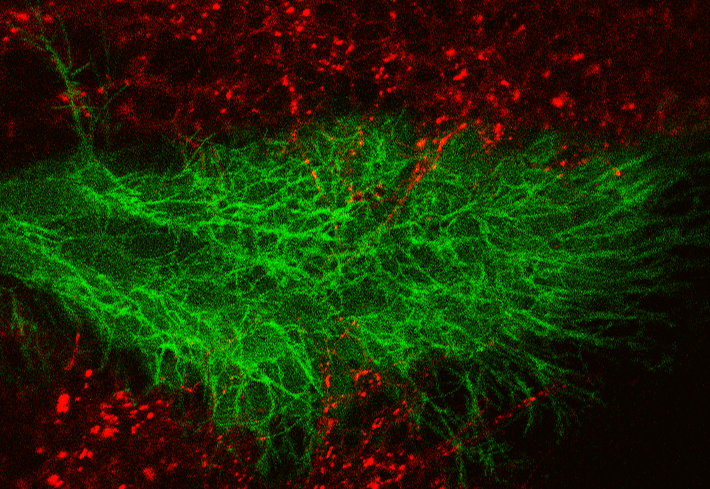Kornberg Lab


Signaling proteins such as FGF, EGF, Hh, Dpp, and Wingless play vital roles during the induction, growth and patterning of tissues and organs in Drosophila. The mechanisms that move these signaling proteins, often over long distances, or that constrain them to signal only to their intended targets, have been investigated for many years; we have obtained strong evidence that movement and delivery is based direct cell-cell contact.
Cytonemes are specialized types of filopodia that we first identified in the Drosophila wing imaginal disc, and their highly regular orientation directed toward the developmental organizer at the Anterior/Posterior compartment border from flanking cells suggested to us that cytonemes might serve as conduits to move signals from the signaling center (Ramirez-Weber and Kornberg, 1999). We have characterized these wing disc cytonemes further and have shown that they are dependent upon and sensitive to the distribution of Dpp (Hsiung et al, 2005). We have also identified and characterized cytonemes in the eye imaginal disc and trachea, found the wing disc, eye disc and tracheal cytonemes are diverse in composition and exhibit both specificity for stimulating ligands and plasticity in orienting to novel sources of ligand (Roy et al, 2011), and showed that cytonemes synapse with target cells, traffic signaling proteins from producing to target cells and are required for signaling (Roy et al, 2014). This contact-based mechanism of paracrine signaling mediates Wingless and Notch-Delta signaling (Huang and Kornberg, 2015), as well as Hedgehog, Dpp, FGF and EGF signaling. Cytoneme-based movement of signaling proteins is a mechanism for cell-cell communication that transfers signaling protein in a targeted manner to a specific recipient cell.